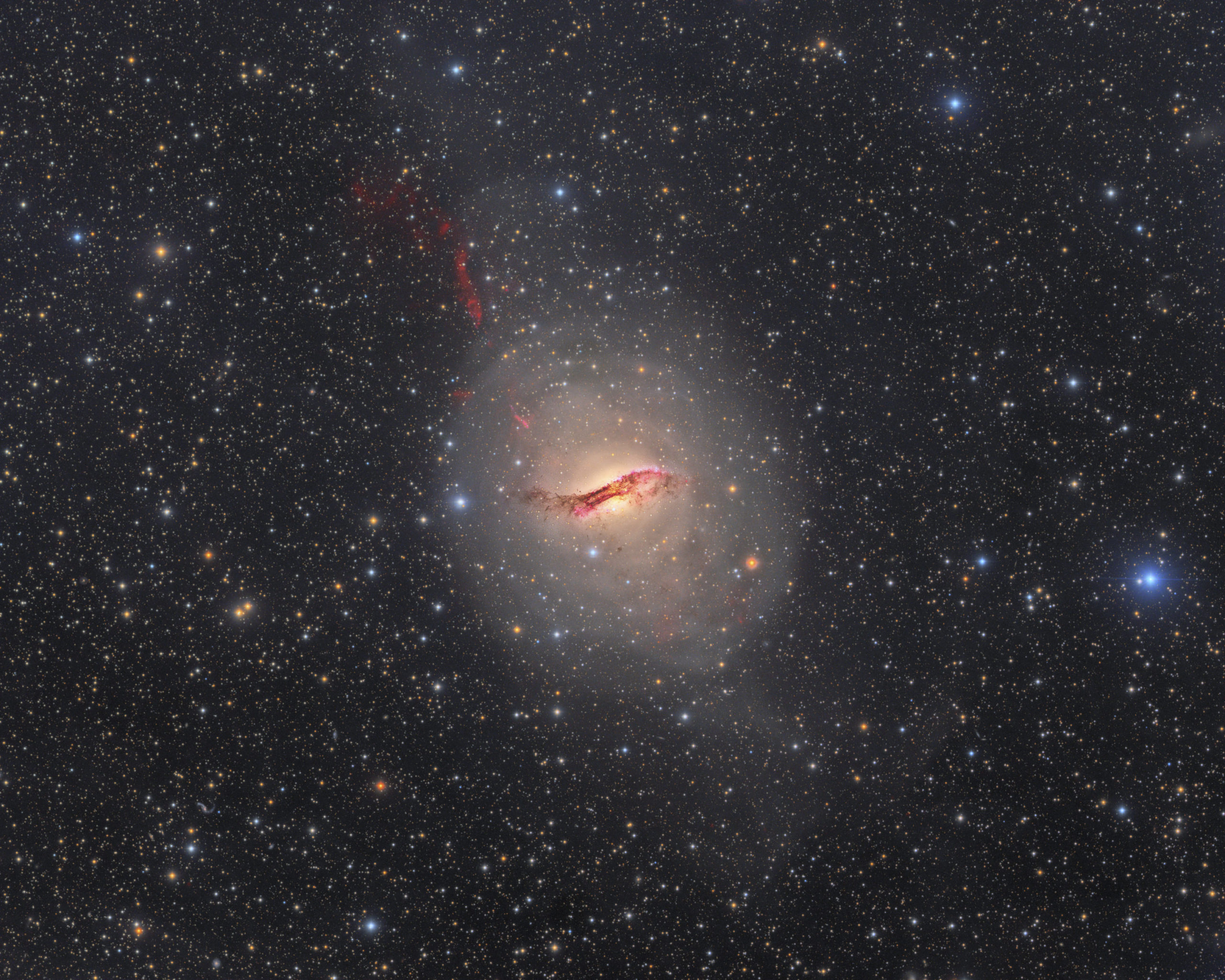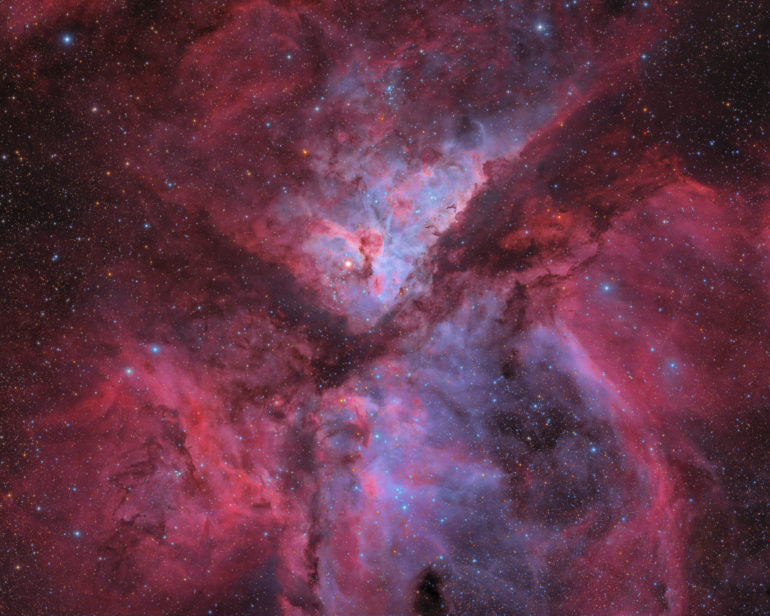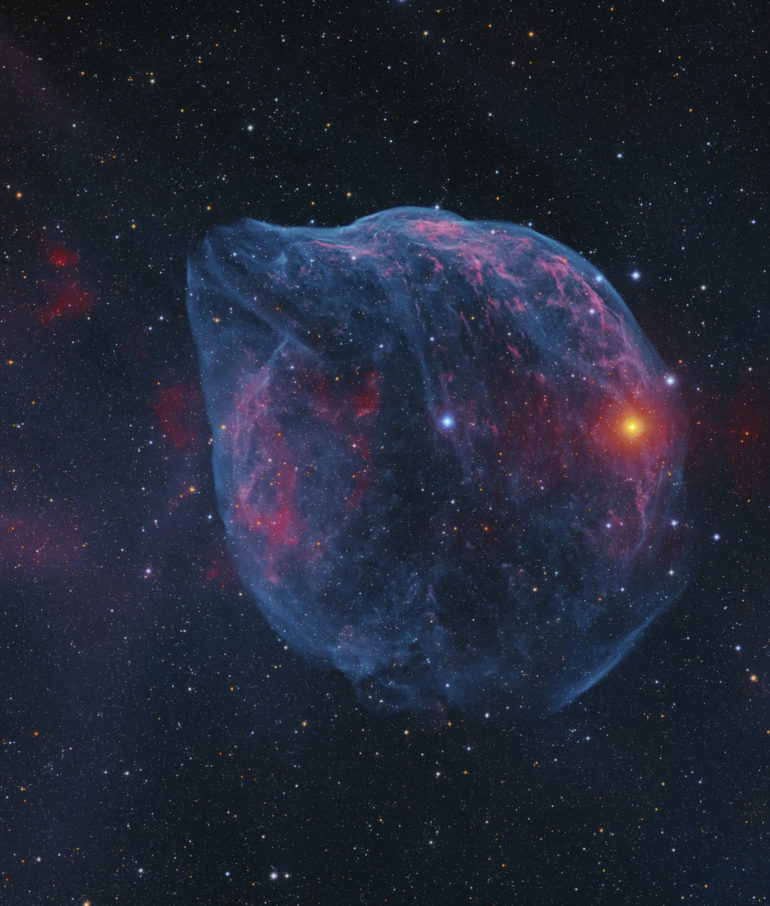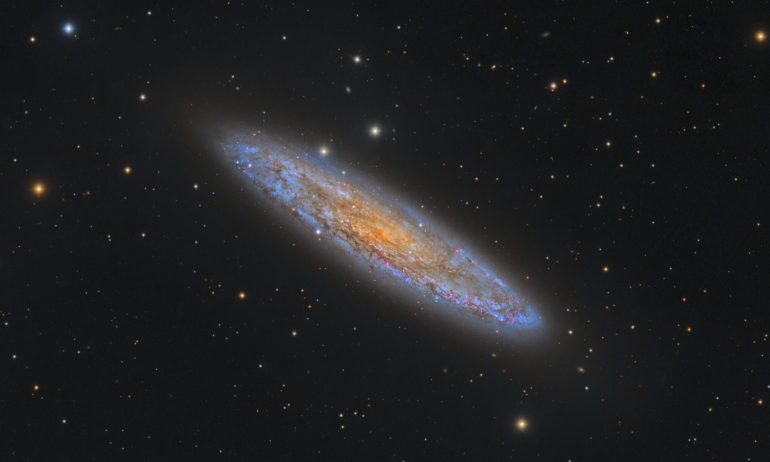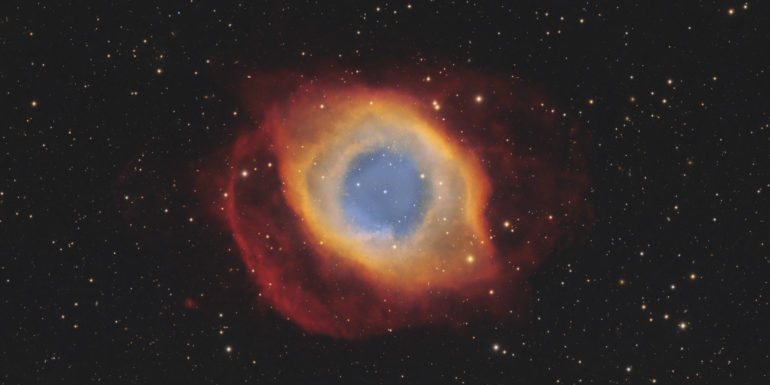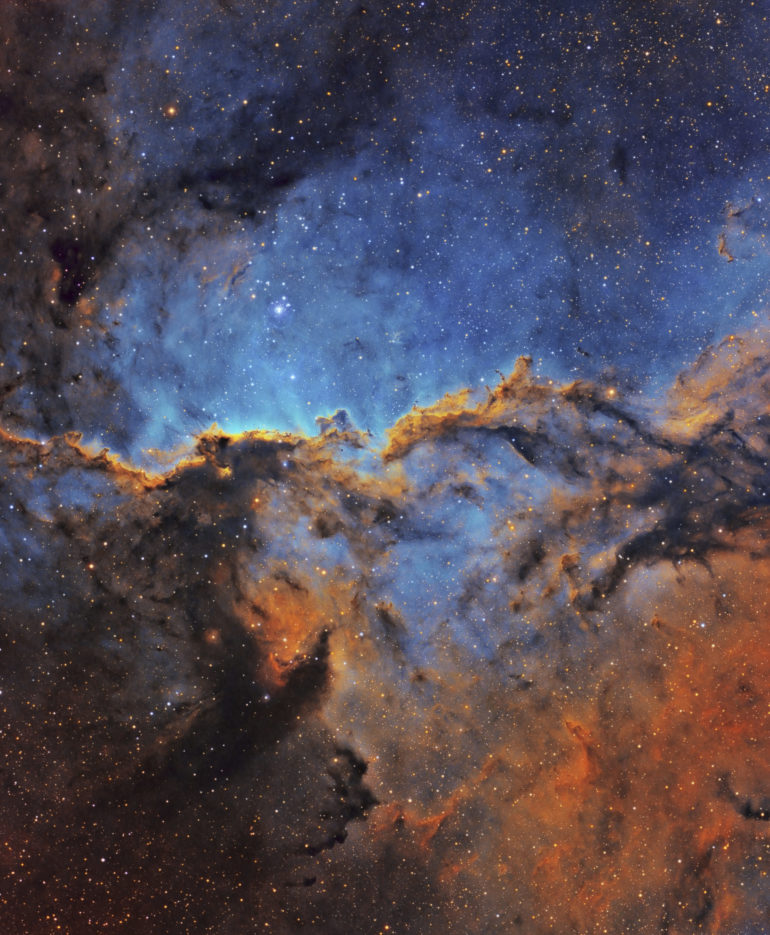Last Updated on 03/05/2020 by Mark Beckenbach
Connor M Matherne is probably the first amateur astrophotographer to photograph this occurrence at a black hole.
“This jet, in particular, was not discovered until 2017, so at the very least the window of time for someone else to image this is relatively small,” explains Connor M. Matherne to the Phoblographer in an interview. He’s an amateur astrophotographer with a Masters of Science in Geology and based at Louisana State University. If he’s correct, he could also be the first amateur astrophotographer to capture the relativistic jet from the Centaurus A black hole. “In the 2017 paper published b McKinley et al., they had the help of amateur astrophotographer Rolf Wahl Olsen who shot the same target and recently updated his total exposure time to 130 hours for it. Still no C jet sadly.” Connor states that an astrophotographer needs access to both great equipment and even better skies to pull off what he did. The breathtaking image above cannot be done easily–at least not by amateur photographers. And this isn’t the only masterpiece Connor has done.
“I have many failures under my belt. Before moving to a permanent telescope installation, I remember the number of times I would stay up all night in my front yard imaging away for 8 hours.”
Phoblographer: Talk to us about how you got into astrophotography. Was it more of a fascination with science first or photography first?
Connor: This is a good question. I started by borrowing my brother’s dusty telescope he had never really used one night while I was in college. We were all rather bored, so I decided to take it outside and see if I could see anything. I pointed it at the first bright thing in the sky roughly, and I looked through the eyepiece and saw Jupiter with its 4 moons. I was awestruck and immediately ran in to get my brother and roommates to come look. They didn’t really care, though, so I tried putting my cellphone up to the eyepiece to show them. I would say that was my first astrophotography attempt. I don’t know if I could label it a fascination with one or the other. I have always loved science, went to college originally doing engineering before switching to geology 5 semesters in after realizing just how much I loved rocks. With that in mind, I would say it was most likely science at first. This isn’t to say I didn’t enjoy photography though, I was just not great at it. As I’ve progressed over the years, though, I have realized just how little science is done via astrophotography, so now I would say it is more of a photography and aesthetic fascination. Of course, science has been done, and can still be done by amateur astrophotographers, but that is quite rare.
Phoblographer: In your post, you say you used a “Takahashi TOA-150B telescope and an FLI16200 camera using HαLRGB filters for a combined total of 67.5 hours.” Do you mind telling us a bit about how this gear helped you actually capture the image? I also see on your Instagram that you sell prints made with a DSLR. Mind telling us about your other equipment, and why you chose it?
Connor: The telescope an camera are both some of the best available to consumers. The telescope helps give both a clean and sharp view, while the camera helps pick up the more faint areas. The RGB filters are used for color, the L filter is used for detail. The Hα filter is actually the filter used for the jet. As hydrogen is excited, it releases light at a very specific red wavelength. That filter allows us to block out everything (most of the galaxy, light pollution, moonlight) except for that wavelength.
The DSLR I use on occasion when photographing the moon, or widefield shots is a 7D Mark II. Most people assume that you need a full-frame, but that isn’t true. The 7D Mark II has some of the best color accuracy and lowest read noise of any DSLR on the market, especially when I purchased mine years ago when at the price point, it is very hard to beat.
“A (very) common misconception is that what people see on my Instagram, is planetary science. Or that being a planetary scientist involves taking pictures of the night sky. Neither is true.”
Phoblographer: 70 hours of exposure time is a whole lot! How do you know how long you’re supposed to expose an image? Most people work in fractions of seconds, and Astro can be a few hours, if not more.
Connor: At the amateur observatory I work with known as Deep Sky West, we have pretty standard exposure times for each filter. For something like RGB, we generally do between 300″ (for stars only really), up to 900″ (for a whole image). For L, we generally do 900″. For Sii, Ha, or Oiii, we will use 1800″ because of how little light makes it to the sensor since you block so much. This image was no different, using 1800″ exposures for the Ha, 900″ for the L, and 900″ for the RGB since we wanted more than the stars. The main difference was how many of each frame we collected where most of our images average ~20 hours of exposure, this one was nearly 70. This is due to 2 things. One, we know the jet is dim, and we wanted to capture it. Two, we imaged it twice since the first one came out kind of ‘eh’ due to some equipment issues. Both times the images were just over 30 hours total; combined, we ended up with 67.5 hours.
Phoblographer: I’ve seen on your Instagram that you photograph the stars often. How do you even know where to begin looking? Have you ever shot for 70 hours and gotten a complete failure? What’s that like?
Connor: If you follow me, you’ll see pretty much all of my stories are just pictures of food I am eating too, I don’t like posting “spoilers” of what image is coming next on my stories 🙂
At this point, I don’t really pick any more what I am going to shoot. I used to when I photographed on my own. Even when I joined teams of other imagers at Deep Sky West who share a single scope, I would be with them debating what shot we would take next. Now, I have more data than I can process, spanning so many targets. There are not really any targets at this point that I feel the need to image. I let others pick at this point what they want, and once we have finished collecting photons, I get to processing. I remember back when there were so many targets to pick, I wanted to shoot them all, and picking was half the fun. I let others have that fun now, I don’t want to take any of that enjoyment away for myself. There are tons of sites out there that help show you what targets are in the sky right now. https://telescopius.com/ is the one I would find myself using the most.
I have many failures under my belt. Before moving to a permanent telescope installation, I remember the number of times I would stay up all night in my front yard imaging away for 8 hours. I would wake up the next afternoon, combine all the data, and see just a terrible result. Or times when instead of imaging all night, I would be troubleshooting all night. Like “why won’t you point where I am telling you too? Why won’t you guide properly? Why is your focuser not locking?”
Phoblographer: You’re a planetary scientist: tell us a bit about that, please. What do you think makes outer space so darned beautiful? What are some of your favorite things to photograph out there, and what makes them so appealing?
Connor: A (very) common misconception is that what people see on my Instagram, is planetary science. Or that being a planetary scientist involves taking pictures of the night sky. Neither is true. Instead, I study the rocks on the other planets. Specifically, I looked at the ancient climate to Mars in relation to a global ocean or global ice sheets billions of years in its past in relation to the next rover landing site. My research ended up being peer-reviewed and published with myself as the first author. You can read about that here if you are interested.
I love outer space, though. Always have. When I went to school for geology and realized I could combine my love for space and geology in graduate school, I jumped on board.
My favorite things to photograph would be deep space objects like galaxies and nebulae. I never really photograph the moon or planets. There aren’t many planets, much less ones worth imaging (which would be Mars, Jupiter, and Saturn, in my opinion). However, there are hundreds of galaxies and nebulae to pick from. The amount of targets alone is what I love, combined with there being so many that are stunning, but so rarely imaged.
All images used with permission.


